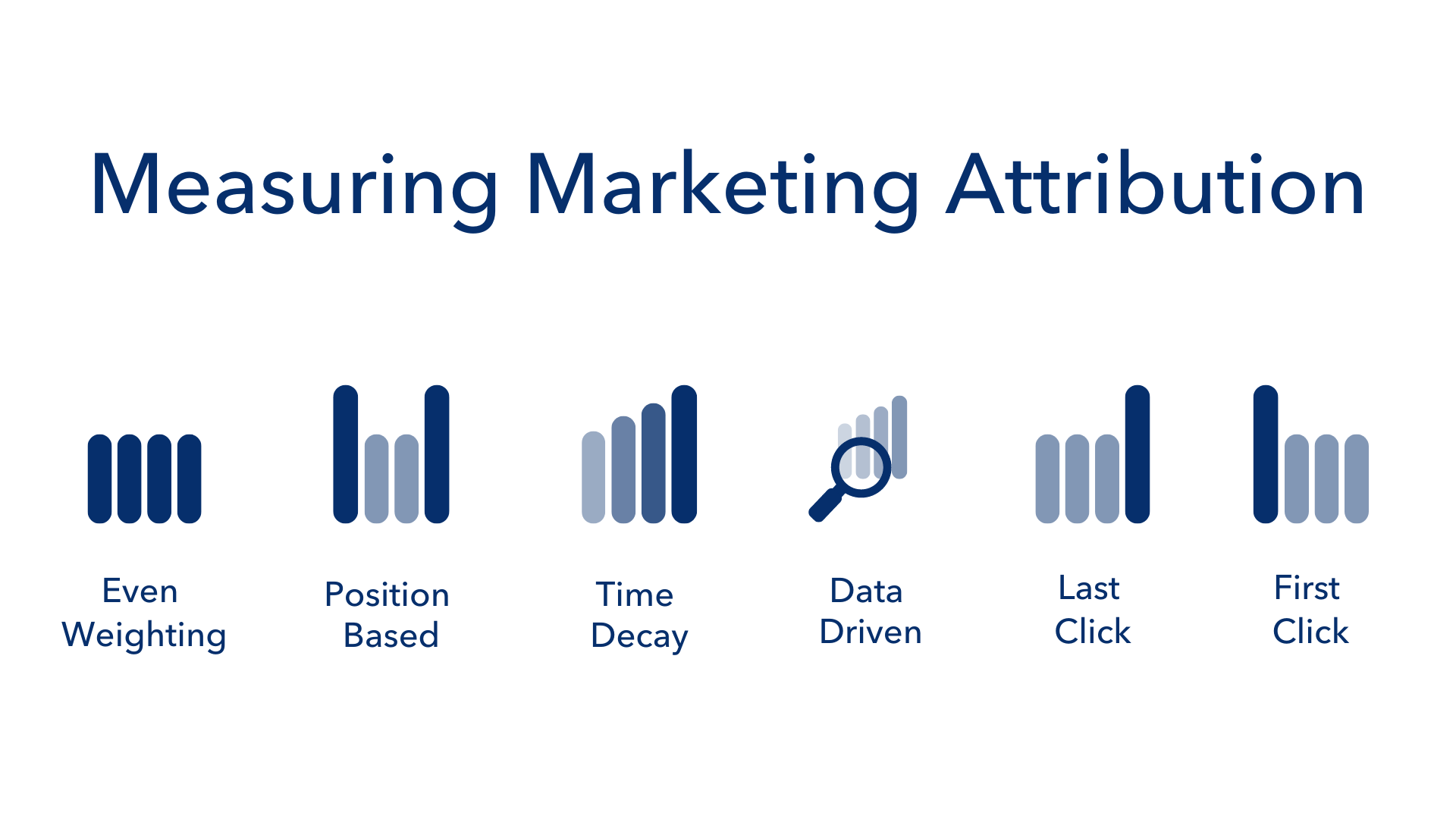Contents
Say "Hey"👋
Subscribe for weekly updates

Measuring Attribution to Make Sense of the Nonsense
Attribution is the process of measuring the performance of your customer touchpoints and branded encounters. It’s how you track conversions, engagement, sales and the buyer’s journey to evaluate marketing ROI.
Okay, that sounds easy enough—well, not quite. The buying journey has never been less linear. Both digital and traditional channels work in sync to drive customers through the sales funnel. Digital marketing is easy to monitor in real-time. But understanding how customers interact with traditional channels requires historical data and a whole lot of number crunching.
Let’s look at the three types of attribution businesses leverage to better understand their channels.
This allows you to easily understand which mail is driving responses with corresponding lists of buyers. You can then hone in further and personalize communications accordingly. Keep it simple. Start broad, then clean your data and segment prospects as you go.
Or give us a call at: 952-258-2000
Okay, that sounds easy enough—well, not quite. The buying journey has never been less linear. Both digital and traditional channels work in sync to drive customers through the sales funnel. Digital marketing is easy to monitor in real-time. But understanding how customers interact with traditional channels requires historical data and a whole lot of number crunching.
Let’s look at the three types of attribution businesses leverage to better understand their channels.
Ways of Measuring Attribution
Measuring attribution breaks down into three broad categories: marketing mix modeling, multi-touch and multi-channel. By using all three models, you can gain a holistic understanding of your campaign performance.
Data hygiene is an absolute nightmare for us. We find success starts by carefully segmenting and targeting the right buyers.
Paul Wallerich,
Senior Vice President, Marketing, Sempris
- Marketing mix modeling
Marketing mix modeling takes a top-down look at the entire buying process. It uses product, price, place and promotion to understand customer behavior. Instead of using a real-time analysis, the marketing mix model uses aggregated historical data to analyze how a business is running. Businesses tend to look at data annually, biannually and quarterly. Instead of relying on clicks, this model relies heavily on statistics - Multi-touch marketing attribution
Multi-touch attribution assigns credit to every touchpoint in the customer journey. It tells us how much influence each step of the buying journey has. This makes it a fantastic method of attribution measurement for seeing if the ads you run are performing the way you planned. This measurement allows you to pinpoint how someone got to your website or storefront and see if the touchpoints closed the set conversion
- Even weighting This is where you push a message on all channels and weigh every touchpoint equally. Consider it a go-to metric for long purchase cycles, where sales and marketers stay in front of prospective buyers for a long time
- Position based This is also known as a u-shaped model. That's because we assign higher importance to the initial touchpoint and the final close. This metric is ideal for simpler, quicker sales. It tells you which campaigns are opening the best and how people converting finish the journey. This is the model for businesses wanting to bring more people into the pipeline and close deals
- Time decay This is where you apply less weight to the opener and more weight to the close. Why would you use a time decay model? For small ticket items, like cheese or paper clips, where you don’t care about building awareness because people are buying anyway. If a customer was driving past Office Max and needed thumb tacks, at the end of the day, they’re all the same. This metric would be best for measuring whether in-store promotions, shelf space, or branding drives the most sales

- Even weighting This is where you push a message on all channels and weigh every touchpoint equally. Consider it a go-to metric for long purchase cycles, where sales and marketers stay in front of prospective buyers for a long time
- Multi-channel attribution
Instead of looking at individual touchpoints, multi-channel attribution looks at the individual channels that users interact with during their customer journey. In understanding what strategies are leading to the most marketing ROI, you can know where to allocate more of your budget.
- Data-driven model This is almost exclusive to digital marketing. Data is so abundant with digital platforms that you can easily automate the results through Google Ads. It runs an algorithm that attributes based on how people interact with the ads and optimizes bidding accordingly
- Last-click model Marketers hate it. Sales love it. This is when you only track the last channel before converting. It’s the most used attribution model because it’s fast and easy. It tells you exactly which designs, copy, prices and prospects are working
- First-click model Similar to last click, this looks at how leads are introduced to the funnel. This is a great way to see which ads, social campaigns and promotions get the most engagement
- Data-driven model This is almost exclusive to digital marketing. Data is so abundant with digital platforms that you can easily automate the results through Google Ads. It runs an algorithm that attributes based on how people interact with the ads and optimizes bidding accordingly
Measuring Attribution with Direct Marketing
Digital ads are so effective because they can leverage data on users at every touchpoint. We apply that methodology to direct mail when possible. Attach a claim number or another identifier with every piece of mail, then collect data on each recipient when they call or redeem a coupon.This allows you to easily understand which mail is driving responses with corresponding lists of buyers. You can then hone in further and personalize communications accordingly. Keep it simple. Start broad, then clean your data and segment prospects as you go.
- Remove the chances for error Wrong email addresses and phone numbers, misspelled names, bad handwriting and wrong credit card numbers are lost sales. Direct marketing is plagued with potential issues. Attribution numbers can be assigned to each person in a list. This number is then stored and used later with future campaigns. It cuts down the chance of error and speeds up calls, as a customer only uses a number to identify themself
- Segment your list first This goes without saying but cleaning your list and segmenting ads based on who the buyer is makes measuring attribution far easier. Instead of trying to make sense of where the data is from, you can focus on the end results. You can see if certain promotions, formats and lists effect buyer behavior
- Track any and all responses Data is king, and the more you have the better. If you can see how prospects and customers are interacting after touching base with your business, you can better streamline the current process. It’s all about tracking attribution numbers, recording calls and analyzing the demographics
- Sometimes working from the bottom of the funnel is best If you’re selling lower ticket products and services, the sell is easier. But this also means that your list is the most important part of your campaign. Success can be maximized by sending mail to your lists, seeing which ads drive the most sales, then buying more leads accordingly
Looking To Add Fuel to Your Direct Mail campaigns?
Increase your marketing ROI today with quality pre-qualified prospects: Sempris Buy ListsOr give us a call at: 952-258-2000




